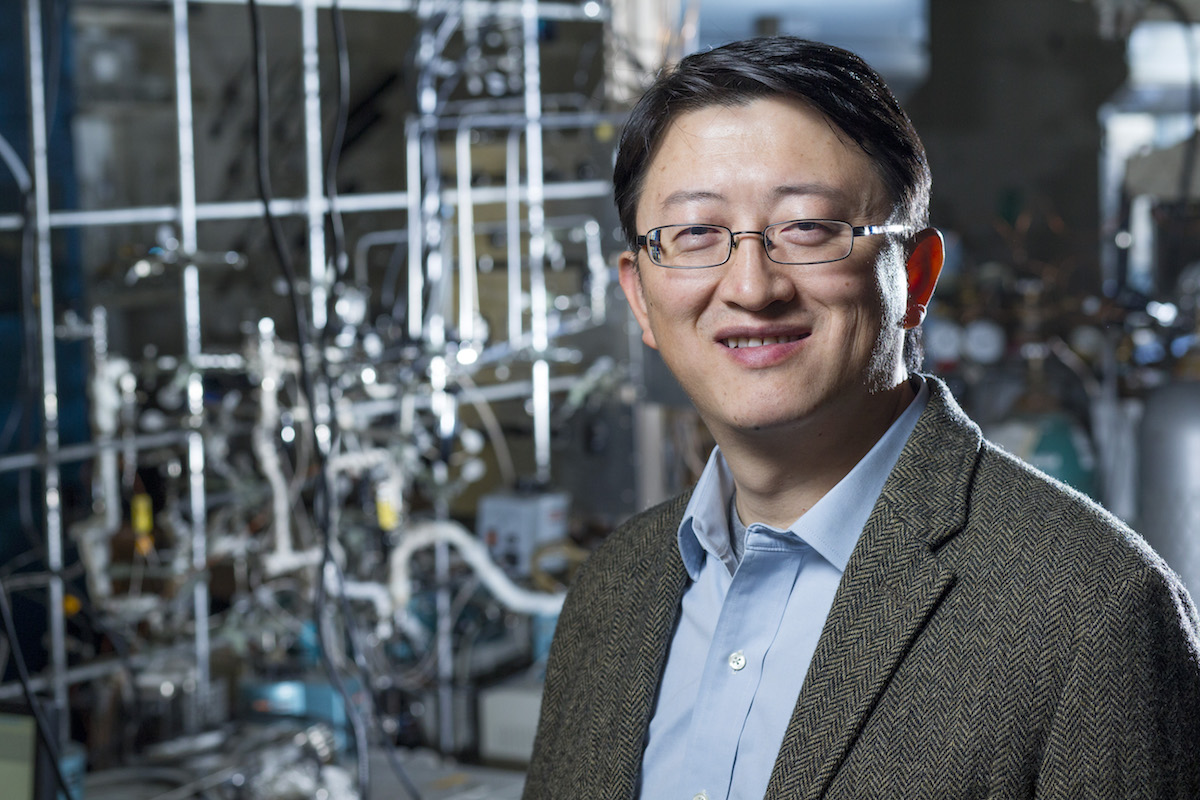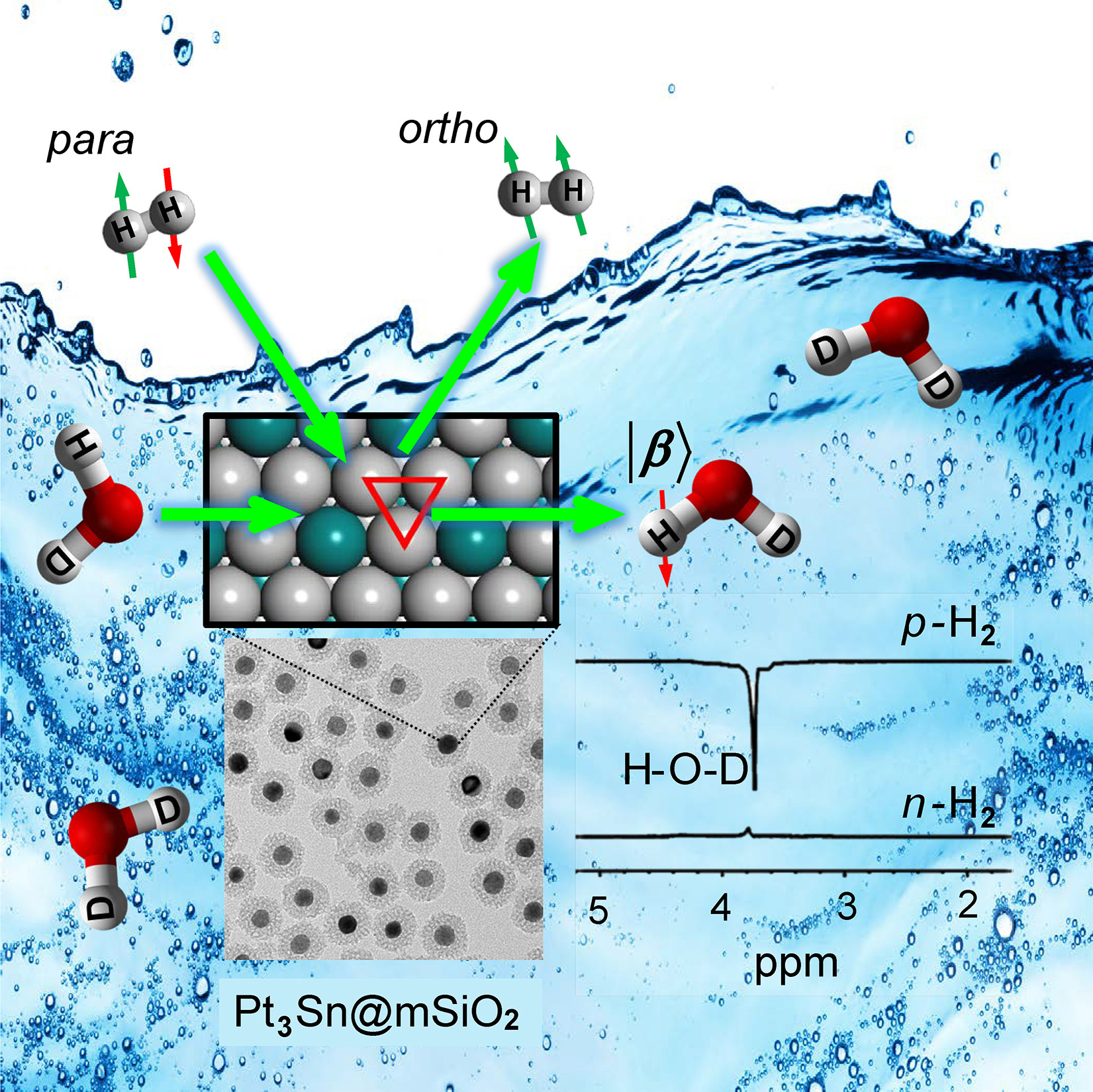
Imagine getting an MRI (magnetic resonance imaging) scan, but instead of lying on a table that slides into the noisy tunnel of a large machine and waiting for the image to be collected, a simple hand-held device scans the area of concern. Such a scenario may one day be a reality thanks to collaborative research by Wenyu Huang.
Huang, associate professor of chemistry, was working with Russ Bowers, professor of chemistry at the University of Florida to enhance the signal of a contrast agent for MRI when they discovered a way to enhance the signal of a substance common to the human body — water. An article by the team reports this discovery the journal Chem.
A conventional MRI scanner uses a large superconductive magnet to create a very strong magnetic field which aligns the nuclear spins of hydrogen atoms in the body tissues. The machine then creates a radio frequency pulse that causes the nuclear spin to change direction. When it is turned off, the spins rotate and ultimately realign with the magnetic field. The rate of rotation and time-scale for the realignment depends on the type of tissue and its spatial location. This data is used to create the MRI image. Often, a contrast agent is injected into the area of interest, in order to enhance the difference between normal and diseased tissue.
Bowers and Huang were looking for a way to increase the signal of the contrast agent. Instead, they found that they could create a strong signal in water itself.
“We typically don’t want a lot of chemicals in our body,” Huang said.

The process works by bubbling hydrogen gas through water that contains an intermetallic compound. This compound is an ordered alloy of platinum and tin whose surface is arranged with three platinum atoms bound together. The hydrogen that is bubbled through has an aligned nuclear spin. When the hydrogen and the water meet at the surface of the intermetallic compound, the way they interact at the surface causes the aligned spin to transfer to water. The compound is then easily separated from the water, leaving pure water that is aligned so as to create a strong signal in imaging techniques.
Because the signal from water is very strong, it is detectable even with only a weak magnetic field. This could eliminate the need for the bulky, expensive MRI machines currently in use and open the possibility of creating the same image with a smaller, inexpensive and portable magnet.
This could be especially beneficial for areas that are not able to afford an MRI machine, Huang said.
Zhao, E. W.; Maligal-Ganesh, R.; Du, Y.; Zhao, T. Y.; Collins, J.; Ma, T.; Zhou, L.; Goh, T.-W.; Huang, W.; Bowers, C. R., Surface-Mediated Hyperpolarization of Liquid Water from Parahydrogen, Chem (2018), https://doi.org/10.1016/j.chempr.2018.03.004